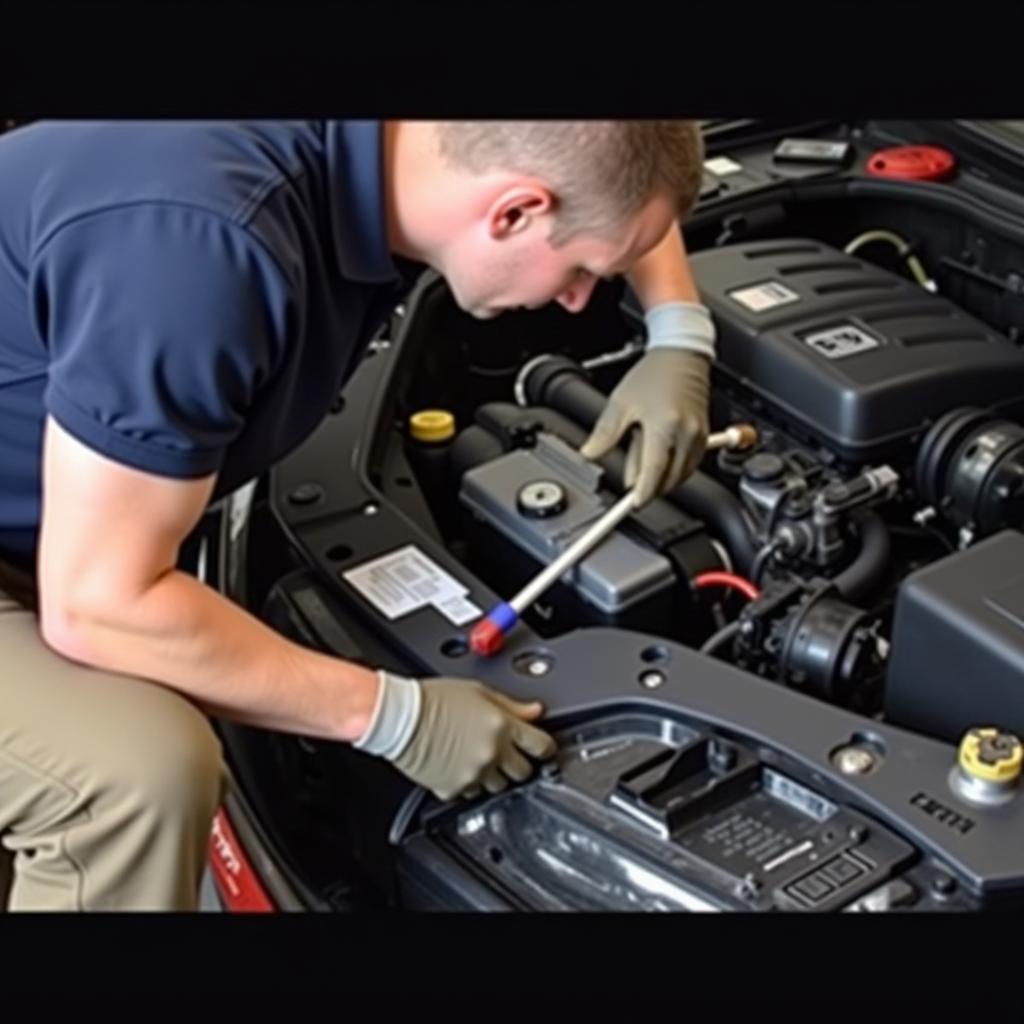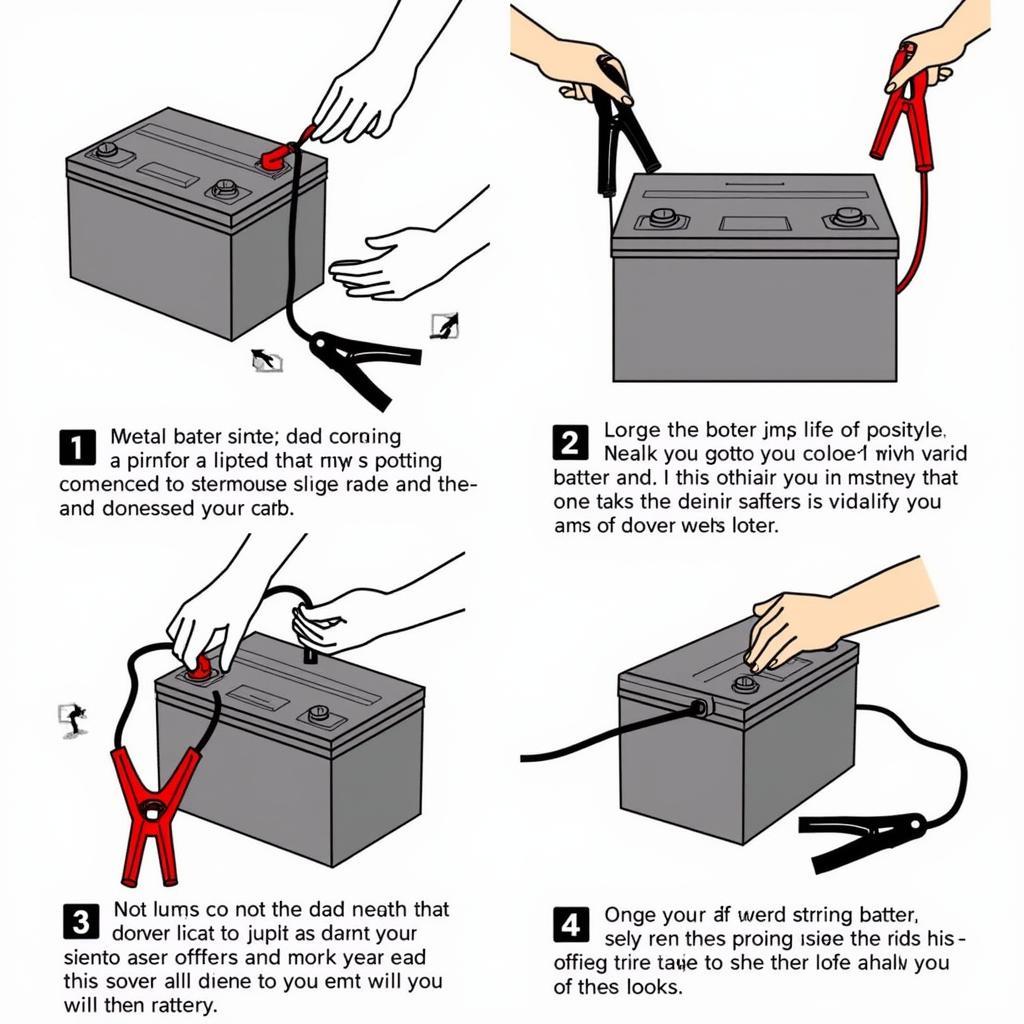The anti-lock brake dashboard warning light, often represented by the letters “ABS,” is a crucial indicator of your vehicle’s safety system. This light illuminates when a problem is detected within the anti-lock braking system (ABS). Ignoring this warning can compromise your safety, especially in emergency braking situations. This article explores the common causes of the ABS warning light and provides solutions for troubleshooting and resolving the issue. After reading this, you’ll be better equipped to address this important warning sign. If your Chevy Silverado’s brake warning light is on, check out our guide on chevy silverado brake warning light.
Understanding the Anti-Lock Brake System (ABS)
The ABS is designed to prevent wheel lockup during hard braking, allowing you to maintain steering control and avoid skidding. It works by monitoring the speed of each wheel and modulating brake pressure to prevent them from locking up. This is especially important on slippery surfaces, such as wet or icy roads.
Common Causes of the Anti-Lock Brake Dashboard Warning Light
Several factors can trigger the ABS warning light. These range from simple issues like low brake fluid to more complex problems with the ABS module itself.
Low Brake Fluid
One of the most common culprits is low brake fluid. The ABS system relies on sufficient brake fluid pressure to function correctly. If the fluid level is low, the warning light will illuminate. Check your brake fluid reservoir and top it off if necessary. However, consistently low brake fluid may indicate a leak, which requires immediate professional attention.
Faulty ABS Wheel Speed Sensors
The ABS wheel speed sensors are vital components that monitor the rotational speed of each wheel. If a sensor is damaged or malfunctioning, it can send incorrect signals to the ABS module, triggering the warning light. Diagnosing a faulty sensor often requires specialized diagnostic tools.
Problems with the ABS Module
The ABS module is the brain of the system, processing information from the wheel speed sensors and controlling the brake pressure. If the module malfunctions, the entire ABS can be affected. A faulty module typically requires replacement or, in some cases, reprogramming.
Issues with the Hydraulic Control Unit (HCU)
The HCU is responsible for regulating the brake fluid pressure to each wheel as directed by the ABS module. Problems within the HCU can also activate the warning light. This can be a complex issue to diagnose and often requires professional help. Experiencing brake warning messages in your Camry? Our guide on camry warning messages brakes can help.
Troubleshooting the Anti-Lock Brake Warning Light
While some causes of the ABS warning light are relatively simple to address, others require professional expertise. If you are comfortable working on your vehicle, here are some steps you can take:
- Check the brake fluid level: Ensure the fluid is at the recommended level. If it’s low, add brake fluid and monitor the level for further drops, which could indicate a leak.
- Visually inspect the ABS wheel speed sensors and wiring: Look for any signs of damage, such as broken wires or corroded connectors.
- Use a diagnostic scanner: A code reader can retrieve diagnostic trouble codes (DTCs) from the ABS module, providing valuable clues about the specific issue.
Does your 2013 Dodge Durango have a low brake warning? Consult our dedicated article on does a 2013 dodge durango have a low brake warning.
 Mechanic Checking Brake Fluid Level
Mechanic Checking Brake Fluid Level
When to Seek Professional Help
If you’re unsure about any aspect of diagnosing or repairing the ABS, it’s always best to consult a qualified mechanic. They have the expertise and equipment to accurately diagnose and fix the problem.
“Ignoring the ABS warning light can be dangerous,” cautions John Smith, a certified automotive technician with over 20 years of experience. “The ABS is a critical safety system, and any malfunction can increase your risk of accidents, especially in adverse driving conditions.”
Remote Diagnostics and Software Solutions
Advancements in automotive technology have enabled remote diagnostics and software solutions for addressing certain ABS issues. Through specialized software, technicians can access your vehicle’s systems remotely, diagnose the problem, and even reprogram the ABS module in some cases. This can save time and money compared to traditional repair methods. If your car’s brake pads warning light is on, check our article on car brake pads warning light.
If you’re seeing a brake warning light on your Mazda Tribute, our guide on mazda tribute brake warning light on can be helpful.
Conclusion
The anti-lock brake dashboard warning light should never be ignored. Addressing the underlying issue promptly ensures the proper functioning of your ABS and contributes to your safety on the road. Whether it’s a simple fix or a more complex problem, understanding the causes and solutions for the ABS warning light empowers you to make informed decisions about your vehicle’s maintenance and safety.
FAQ
-
What does the ABS warning light look like? It’s typically a yellow or amber light with the letters “ABS” or a symbol representing a braking system with circular lines indicating the anti-lock function.
-
Can I drive with the ABS light on? While you can still drive, your ABS is likely disabled. This can compromise your braking performance, especially in slippery conditions. It’s crucial to have the issue diagnosed and repaired as soon as possible.
-
How much does it cost to fix the ABS light? The cost varies depending on the underlying cause. A simple fix like low brake fluid might cost very little, while a more complex issue like a faulty ABS module can be more expensive.
-
How long does it take to fix the ABS light? The repair time depends on the complexity of the problem. A simple fix can be done in minutes, while more extensive repairs might take several hours.
-
Can I fix the ABS light myself? If you have some mechanical aptitude, you might be able to address simple issues like low brake fluid or a loose sensor connection. However, more complex problems require professional expertise.
-
What happens if I ignore the ABS light? Ignoring the light means driving without a functioning ABS, increasing your risk of losing control during hard braking, particularly on slippery surfaces.
-
Can a bad battery cause the ABS light to come on? While unlikely, a severely discharged or failing battery can sometimes cause erratic behavior in the vehicle’s electrical systems, potentially triggering the ABS warning light.


